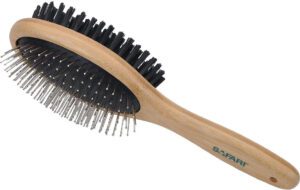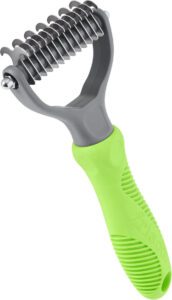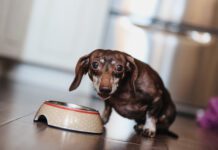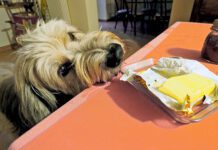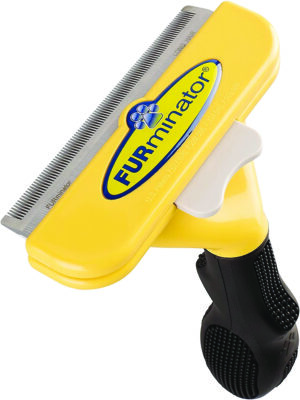
Your dog is shedding, but there are so many different types of brushes and combs, and it’s difficult to know which work best for your dog’s type of coat. Here’s how to decide which grooming tools work best for your dog’s daily or seasonal hair loss. (If your dog’s shedding seems particularly excessive, see “Why Does My Dog Shed So Much?”)
What is the best brush for shedding dogs?
That depends on your dog’s breed. Single-coated dogs like Poodles, Boxers, Dachshunds, and Greyhounds shed only a little and do well with the most gentle brushes and tools. Double-coated breeds like Retrievers and Shepherds shed noticeably all year round and lose extra hair in spring and fall. Their double-layered coats are thick and dense, requiring extra strength, depth, and performance in grooming tools.
What tools or brushes are best for my single-coated dog?
- Silicone grooming gloves have rubber tips on the palms and fingers that collect loose hair and combine grooming with petting. They help manage the hair of single-coated dogs and can polish the coats of all dogs.
-

Dual-action brushes usually have with tipped pins on one side and bristles on the other. Dual-action brushes feature stainless steel pins on one side and nylon bristles on the other. The pins, which often have safety tips, remove tangles and excess hair while the bristles redistribute natural oils that help coats shine, especially on single-coated dogs.
- Slicker brushes are densely packed with rows of angled stainless steel or plastic pins that gently detangle mats and remove dead hair from all breeds and hair lengths, both single- and double-coated.
- Bristle brushes work best for dogs with short hair because they stimulate blood flow, separate hair follicles, and remove dead hair.
What is the best de-shedding tool for my heavily shedding dog?
-

De-matting rakes contain sharp blades that will cut through tangles or mats. Some groomers eschew these tools because they can cut the hair, but that’s the very reason that some time-pressed owners appreciate the tool: It cuts through mats quickly. Rubber or plastic currycombs can be used wet or dry to scrub away dead skin, loose hair, and dirt without painful pulling. They also work well to massage shampoo into your dog’s coat.
- Undercoat rakes are metal brushes that reach well into the undercoat of double-coated dogs to remove dead hair. Often called de-shedding tools, their rounded metal teeth gently disassemble tangles and knots, eliminating dander and trapped dirt. They are recommended for dogs with thick, dense coats and for shaping and thinning hair to create a soft, smooth, shiny coat.
Perhaps the only undercoat rake that has brand-name recognition with pet owners is the Furminator. This tool has doesn’t have individual teeth like a comb or conventional coat rake; instead, individual “teeth” were cut into a single steel bar. The gaps between the teeth are very tight, so the dog’s loose undercoat “catches” between the teeth and is easily and productively pulled out in a volume that pleases dog owners (but not all dogs). Some dogs find the sensation of being brushed with a Furminator highly uncomfortable; others seem to like it. It helps to have the right size of Furminator’s de-shedding tool; the spaces between the teeth and the length of the teeth vary in order to best de-shed dogs with short, medium, or long coats.
Some owners and groomers intensely dislike the Furminator, claiming that the tool is abrasive and shears the dog’s coat. The company says that when the Furminator is used as directed (one to two times a week for 10 to 20 minutes total, and never on wet hair), it does not damage the coat.
Furminator foes prefer de-shedding rakes with rounded stainless steel teeth and sharp interior blades, which break up knots and tangles while being gentle on the skin, making them especially effective for long-haired breeds.
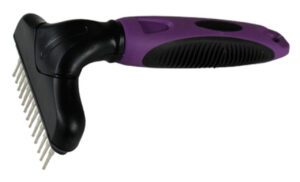
Several shampoos and conditioners claim to control or reduce shedding, most of which contain herbs like aloe vera or green tea, natural oils like shea butter, nutrients like vitamins A, D, and E, and omega 3 and 6 fatty acids. Do they work? No shampoo or conditioner will prevent your dog from losing dead hair, but when combined with regular brushing with appropriate tools, shed-control grooming products can help your dog maintain a healthy coat while helping you maintain a (mostly) shed-free home.


